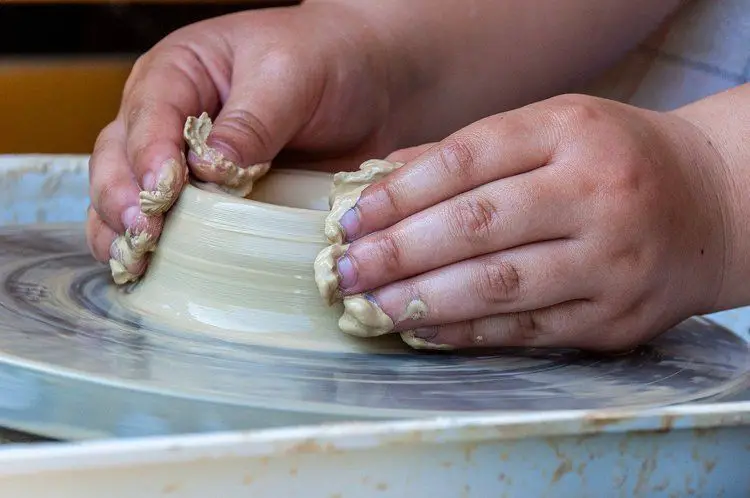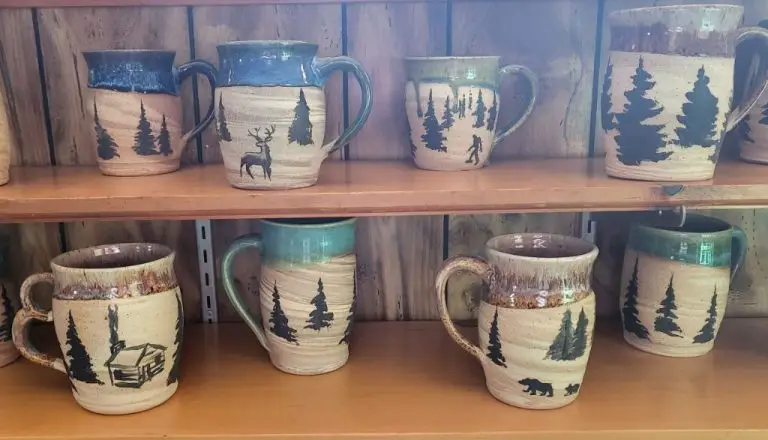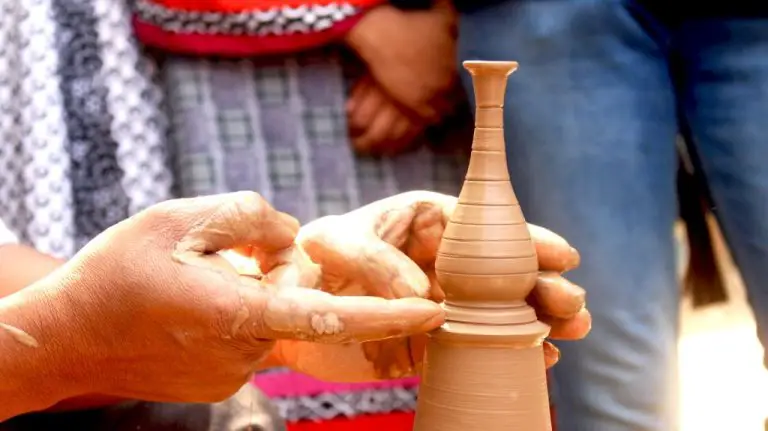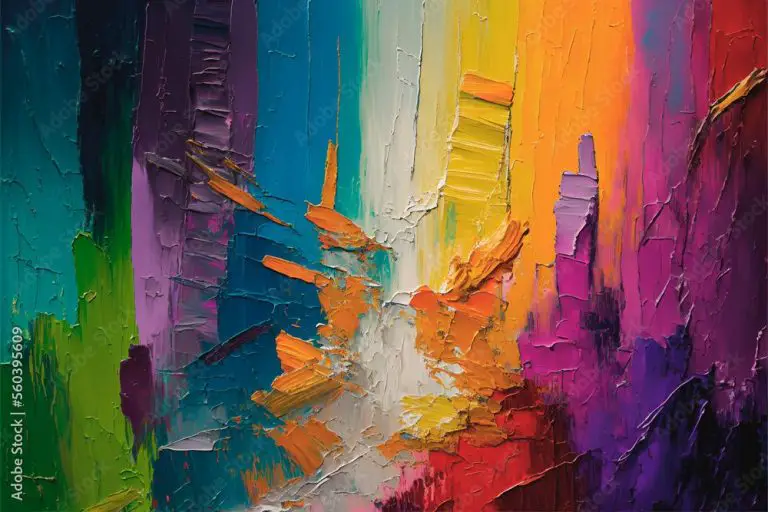What Are Underglaze Transfers?
What Are Underglaze Transfers?
Underglaze transfers are decorative ceramic images that are printed onto special thin paper using ceramic underglaze. The underglaze transfers can then be applied to bisqueware or greenware pottery pieces before firing to permanently affix the image to the clay surface.
Underglaze is a colored ceramic material that is used to decorate pottery. It can be painted onto bare clay before firing, but becomes permanent once the pottery is fired in a kiln. Underglaze transfers allow more intricate and complex designs to be achieved than could be hand-painted using underglaze.
To create an underglaze transfer, the image is first designed on a computer or by hand. It is then printed onto special transfer paper using underglaze-based inks, similar to how inkjet printers print onto paper. The resulting printed transfer paper can then be soaked in water and applied to a bisque or greenware pottery piece. When fired, the underglaze image becomes fused into the surface glaze of the pottery.
Underglaze transfers allow potters to apply photographs, detailed drawings, patterns, text, and more onto their pottery pieces in a quick and simple process. The transfers produce durable images with vibrant underglaze colors.
History of Underglaze Transfers
The history of underglaze transfers dates back to 18th century England. The technique was developed as an alternative to freehand decoration and allowed for the mass production of decorative pottery. According to Wikipedia, transfer printing of underglaze was first used in Staffordshire pottery starting in the 1760s.
Underglaze blue printing originated in Liverpool in the late 1760s and was pioneered by potter Philip Christian, as noted by Printed British Pottery and Porcelain. The quality of the early blue prints was high, much better than other attempts at the time. This printing method allowed pottery studios to apply intricate detailed designs to their wares through a fast and efficient industrial process.
The development of underglaze transfer printing enabled the mass production of affordable, highly decorative pottery and porcelain pieces in England during the late 18th and 19th centuries. It revolutionized the industry and made decorative tableware available to a much wider audience.
How Underglaze Transfers Are Made
Underglaze transfers are made using a printing process that allows the transfer of an image onto ceramic bisqueware. There are a few different types of paper that can be used for underglaze transfers:
Rice paper – This thin, delicate paper is commonly used for underglaze transfers. The ink adheres well to the texture of rice paper. Images must be reversed before printing onto rice paper so they transfer correctly onto the bisqueware (Source).
Tissue paper – Another lightweight paper option. The tissue paper gets wet and dissolves when applied to the bisqueware.
Newsprint – Cheap and accessible, but more prone to ripping than rice paper. Must be sealed to prevent underglaze from soaking in (Source).
The basic production process is:
- Create the desired image and reverse it for transferring.
- Print the image onto the transfer paper using underglaze ink.
- Allow the underglaze ink to fully dry on the paper.
- Dampen the bisqueware slightly.
- Place the transfer paper print-side down onto the bisque.
- Burnish gently but firmly to transfer the image.
- Allow the transferred image to dry fully.
- Clean up edges and fire the bisqueware.
Using Underglaze Transfers
A key benefit of using underglaze transfers for ceramic decoration is the ease of application onto bisqueware compared to freehand decoration. Bisqueware provides an ideal porous surface for transfers to adhere to before firing. The process involves carefully applying the transfer paper ink-side down onto the bisque surface after misting it with water, gently burnishing it, then peeling away the paper backing to reveal the transfer design.
This transfer method allows for crisp, detailed designs not easily achieved by hand painting. It also saves significant time compared to freehand work. Some tips for best results are:
- Apply even pressure when burnishing to fully transfer the design.
- Avoid sliding the paper once placed, as this can smudge the transfer.
- Work in small sections for better control.
- Let the transfer fully dry before removing the backing paper.
- Seal the transferred design with a thin coat of clear glaze.
With proper application on bisqueware, underglaze transfers produce vibrant, lasting results not attainable through freehand methods alone. They expand the decorative possibilities for pottery and ceramic work.
Types of Underglaze Transfer Designs
There are many popular design themes for underglaze transfers. Some of the most common types of designs include:
Floral patterns: Underglaze flower and plant motifs remain a staple in ceramic arts. Floral designs can range from vintage and traditional botanical drawings to creative modern designs like stylized flowers and succulents. These transfers allow artists to easily achieve complex floral details on pottery.
Animals: Transfers featuring all types of animals are widely available, from cute kittens and puppies to majestic horses and wildlife scenes. These can add whimsical, playful, or rustic charm to pottery pieces.
People/portraits: Portraiture and human forms provide timeless fine art appeal on pottery. Transfer options range from classical cameos and silhouettes to unique modern character designs. These personalized accents can make pottery feel custom and distinctive.
Landscapes: Scenic vistas and landscape images allow potters to incorporate intricate outdoor details. Common nature themes include mountains, forests, beaches, lakes, deserts, and night skies filled with stars. Tranquil landscapes often complement pottery with a soothing, peaceful aesthetic.
Geometric: From repeating patterns of lines, shapes, and angles to optical illusions, geometric transfers introduce eye-catching visual dynamics. The mathematical precision balances nicely with the organic art of handmade pottery.
Novelty: For a playful accent, some transfers feature stylized words, characters, symbols, icons, or inside jokes. These imaginative motifs stand out with a hint of humor, whimsy, or hidden meaning.
Advantages of Underglaze Transfers
Underglaze transfers provide several key advantages for ceramic artists and designers:
- Consistency: Underglaze transfers allow artists to achieve very consistent results across multiple pieces. The transfer paper ensures the image and design comes out the same every time.
- Efficiency: By using underglaze transfers, artists save significant time compared to hand-painting each individual piece. The ability to quickly apply designs improves workflow.
- Accessible Decoration: Underglaze transfers make complex designs, textures, and effects accessible even for beginner ceramic artists. The transfers contain intricate details that would require great skill to recreate by hand.
- Ability to Replicate: Artists can easily replicate the same design over and over using underglaze transfer paper. This allows for unlimited reproductions and customization possibilities.
As summarized on The Art of Education, underglaze transfers provide consistency, efficiency, and accessible decoration for ceramic artists and designers of all skill levels. The ability to easily replicate designs unlocks many creative possibilities.
Disadvantages of Underglaze Transfers
While underglaze transfers provide some advantages in terms of ease of application, there are some drawbacks as well:
Less Creative Control: With underglaze transfers, the design is already predetermined so you don’t have the same creative freedom as painting directly on the ceramic piece. You are limited to the transfer pattern options available.[1]
Transfers Can Fail: There is always a risk of the transfer failing and not properly adhering to the ceramic piece. Factors like improper application, old transfers, or incompatible surfaces/glazes can prevent successful transfer.[2]
Limited Design Options: Compared to freehand decoration, transfers limit the design choices for ceramic pieces. There are only finite transfer patterns available, restricting creativity and customization.
Underglaze Transfer Tips
When working with underglaze transfers, there are a few tips to follow to ensure success and avoid common issues like air bubbles:
Avoid Air Bubbles
– Mist the bisqueware lightly with water before applying the transfer. Too much water can cause bubbling. https://elantransfers.com/pages/instructions
– Use a soft rubber roller to gently push out any air bubbles after applying the transfer.
Seal Transfers
– Once transferred, seal the design by spraying with a light mist of water and allowing to thoroughly dry. This prevents the transfer from flaking off before firing. https://www.baileypottery.com/blog/post/new-underglaze-transfers-part-1-how-to-apply-underglaze-transfers-to-the-clay-surface.html
Firing Recommendations
– Always follow the manufacturer’s instructions for firing temperature and times. Underglaze transfers typically fire at cone 06. Fast firing is not recommended.
Notable Underglaze Transfer Artists
Some of the most influential ceramic artists have utilized underglaze transfers in their work. Artists such as Picasso, Clarice Cliff, and Susie Cooper helped popularize the use of transfers.
Pablo Picasso, the famous Spanish painter, sculptor and ceramicist, often incorporated ceramic transfers into his pottery. He produced over 2000 ceramic pieces from 1947 to 1971, many featuring bold graphic designs from transfers.[1]
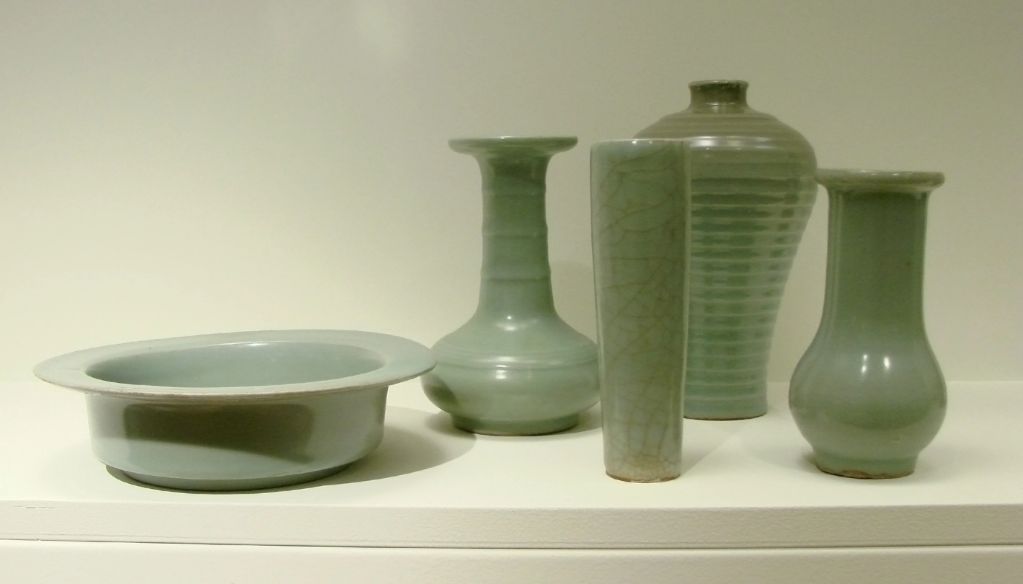
Clarice Cliff, a pioneering English ceramic artist active in the 1920s and 30s, was known for her innovative Art Deco style pottery. She made extensive use of underglaze transfers to create her iconic bold, geometric surface designs.[2]
Susie Cooper, an English potter active in the early 20th century, helped popularize more affordable, mass-produced pottery decorated with underglaze transfers. Her transfer printed earthenware combined Art Deco and Arts & Crafts styles for everyday tableware.[3]
These three artists helped demonstrate the creative potential of underglaze transfers in ceramic art and design. Their innovative use of transfers influenced many ceramicists who followed.
The Future of Underglaze Transfers
The future of underglaze transfers looks bright, with innovations in digital printing and custom design making transfers more accessible and higher quality than ever before. According to research from the University of the West of England, combining digital printing technologies with traditional underglaze transfer techniques allows for greater design flexibility and retention of this historic industrial process.
One exciting development is the ability to create completely custom underglaze transfers using digital methods. Artists can now design their own images on the computer and print them onto transfer paper using inkjet printers. This allows for one-of-a-kind designs not possible with traditional hand-drawn and screen printed transfers. Digital printing also enables scaling of images and repetition of elements that would be extremely tedious by hand.
New transfer papers and inks are also being developed to work specifically with digital printers. Rice papers that are thinner and more flexible are easier to wrap around curved ceramic surfaces. Specially formulated inks have also been designed not to clog print heads or bleed on the transfer paper. These innovations allow for crisper, more detailed digital transfers.
While digital methods open up many possibilities, there will likely always be a place for hand crafted, screen printed transfers as well. The future of underglaze transfers combines the best of both traditional techniques and new technologies.

